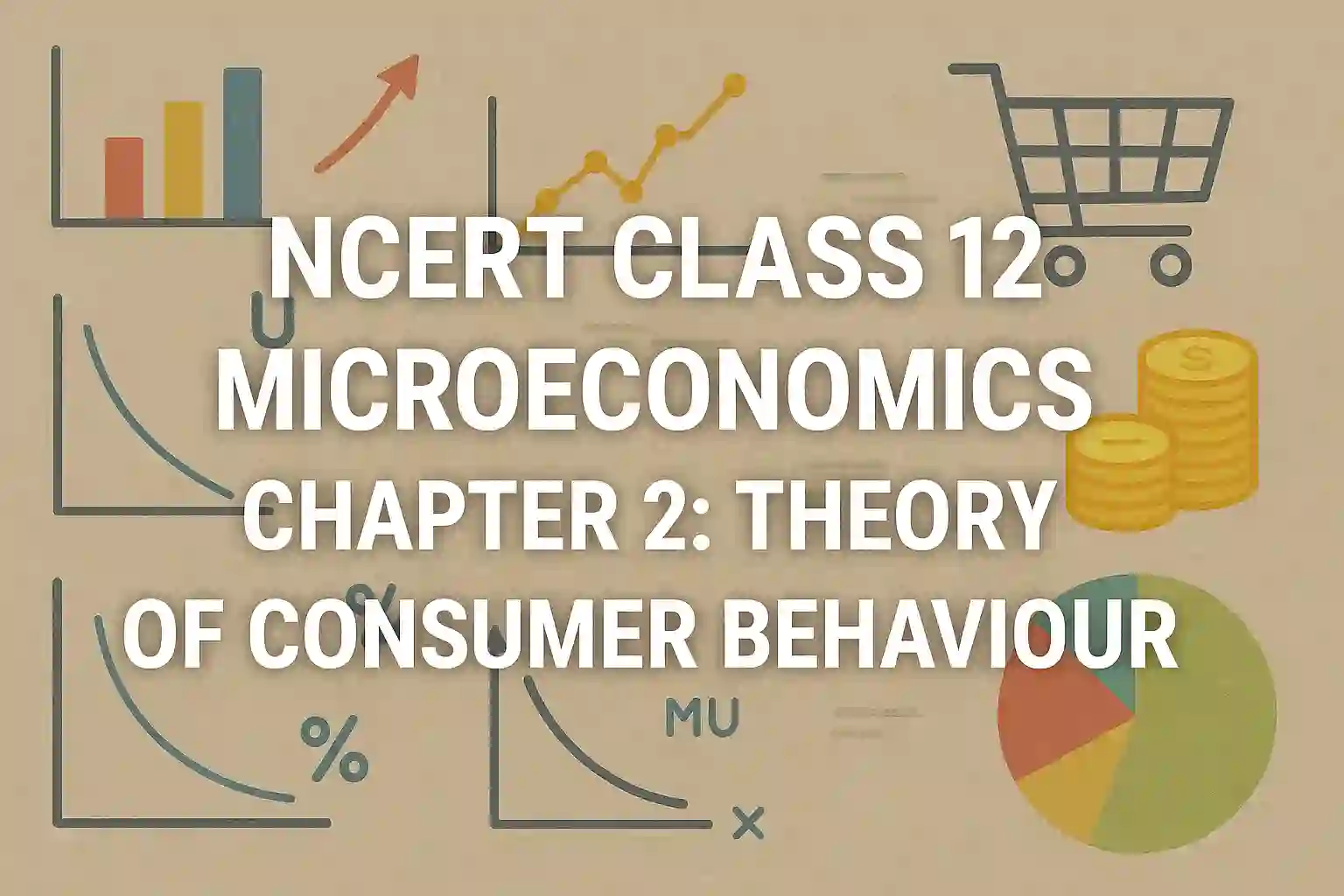Chapter 2 of Class 12 Microeconomics is all about understanding how consumers make choices based on their income, preferences and the prices of goods. Titled Theory of Consumer Behaviour, this chapter explains how a consumer decides what combination of goods to buy for maximum satisfaction. It uses basic tools like budget lines, indifference curves, and utility analysis to explain decision-making. The concepts in this chapter are not only scoring but also useful in day-to-day thinking.
I’m covering this topic because students often find this chapter slightly more technical due to its graphs and marginal concepts. But once understood properly, it becomes one of the most logical and practical chapters in Economics. Whether it’s exam preparation or general understanding, knowing how consumers behave helps you analyse market situations better. I remember struggling with terms like marginal utility and indifference curve in school. But with simple examples, it became easier to grasp. That’s why I want to make this article as simple as possible, so that anyone reading this can understand the full chapter and also download the official NCERT PDF easily for revision.
Key Concepts in Chapter 2 – Theory of Consumer Behaviour
This chapter teaches us how a rational consumer decides what to buy, given their limited income and unlimited wants. It discusses different theories to explain consumer preferences.
1. Utility: Total and Marginal
- Total Utility (TU): Total satisfaction received from consuming all units of a product
- Marginal Utility (MU): Extra satisfaction from consuming one additional unit
Law of Diminishing Marginal Utility: As you consume more units of a good, the marginal utility from each extra unit decreases.
Example: First slice of pizza gives the most satisfaction. By the 4th or 5th slice, the satisfaction drops.
2. Consumer’s Equilibrium (One Commodity Case)
A consumer is said to be in equilibrium when he or she is getting maximum satisfaction from spending their income. This happens when:
MU of good = Price of good
In simple terms, the value (satisfaction) we get from spending ₹1 on the good should be the same as what we are paying for it.
3. Consumer’s Equilibrium (Two Commodity Case)
Here, we consider a consumer buying two goods (say, tea and biscuits). The equilibrium is reached when:
- The ratio of MU to price is equal for both goods
MUx/Px = MUy/Py - The total income is spent
This condition helps consumers decide the best mix of goods to buy.
4. Indifference Curve Analysis
This is a more modern approach. An indifference curve shows all combinations of two goods that give the consumer equal satisfaction.
Key Points:
- Indifference curves slope downward
- They are convex to the origin
- Higher curves represent higher satisfaction
- Indifference curves never intersect
The consumer’s goal is to reach the highest possible indifference curve while staying within their budget line.
5. Budget Line
The budget line shows all combinations of goods that a consumer can afford with a given income and prices.
Equation of the budget line:
PxX + PyY = M
Where:
Px = Price of good X
Py = Price of good Y
M = Income
When the budget line is tangent to the indifference curve, the consumer is in equilibrium.
6. Demand and Price Relationship
The chapter also explains how price affects demand. When the price of a product falls, the consumer buys more of it. This is known as the Law of Demand.
Download PDF – NCERT Class 12 Microeconomics Chapter 2
NCERT Class 12 Microeconomics Chapter 2: Theory of Consumer Behaviour PDF



















